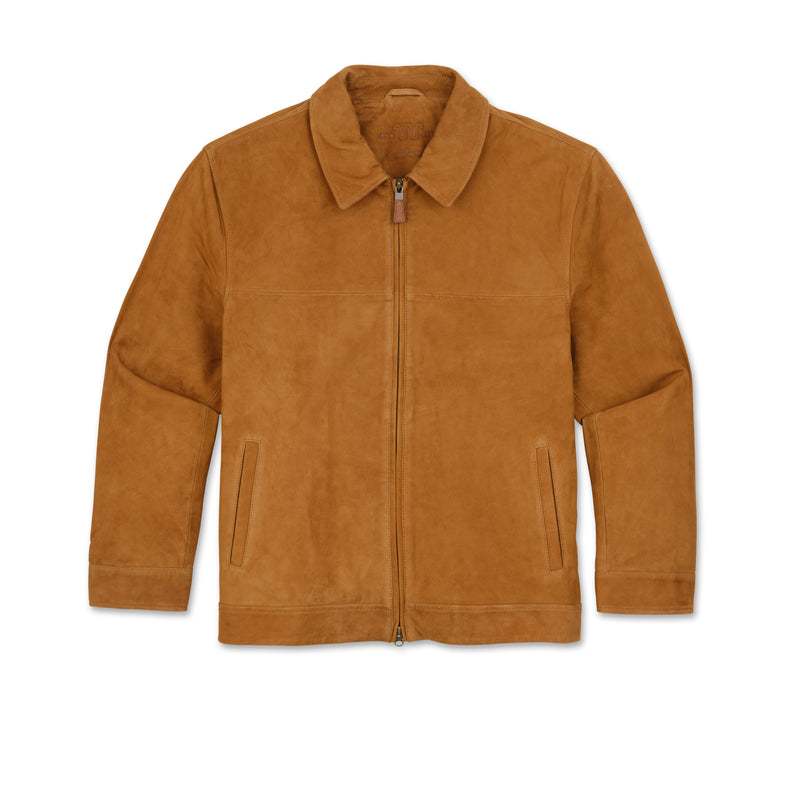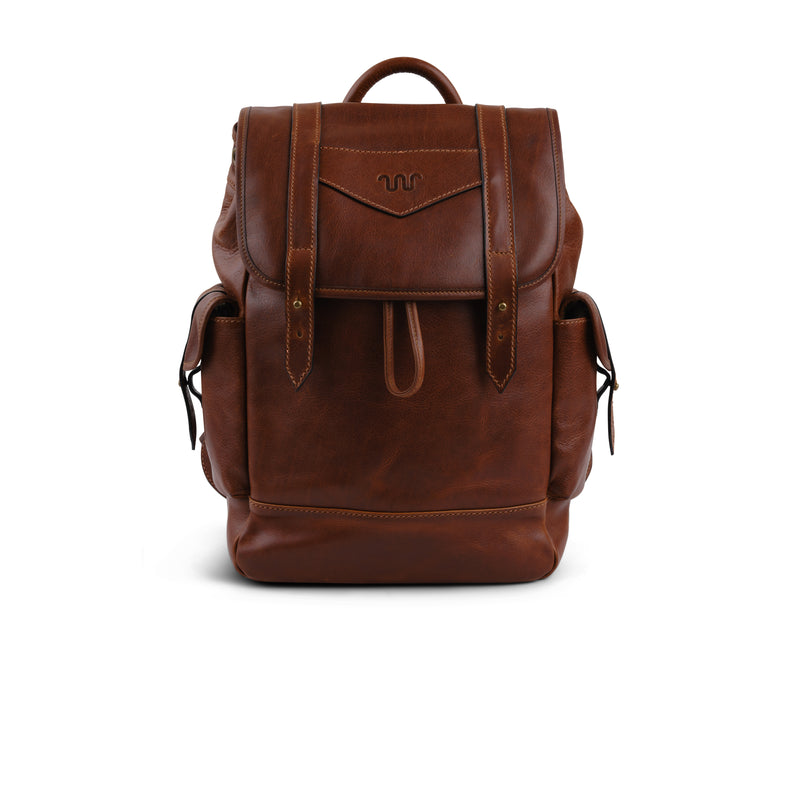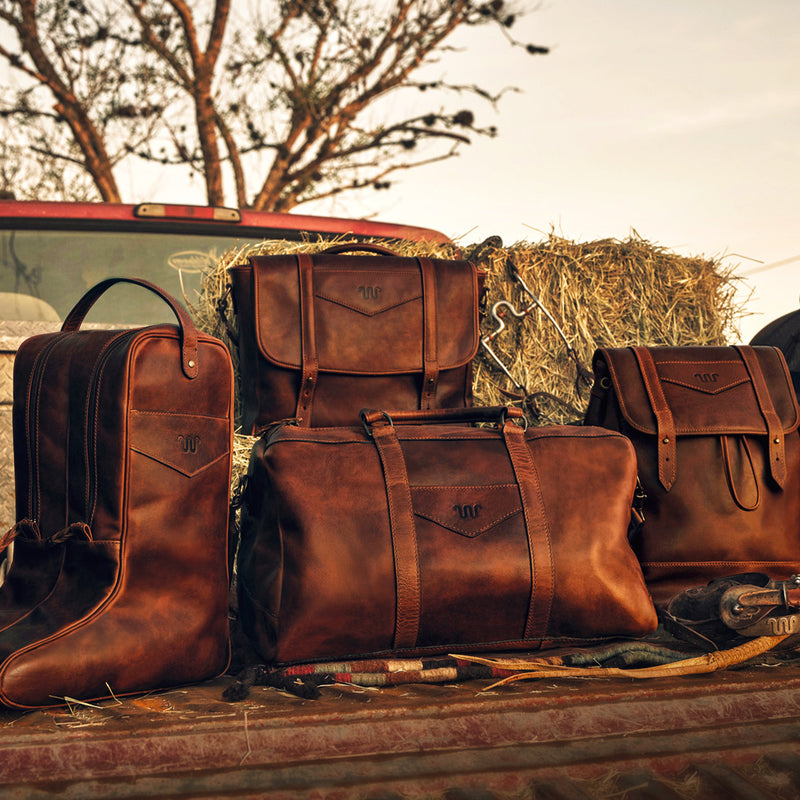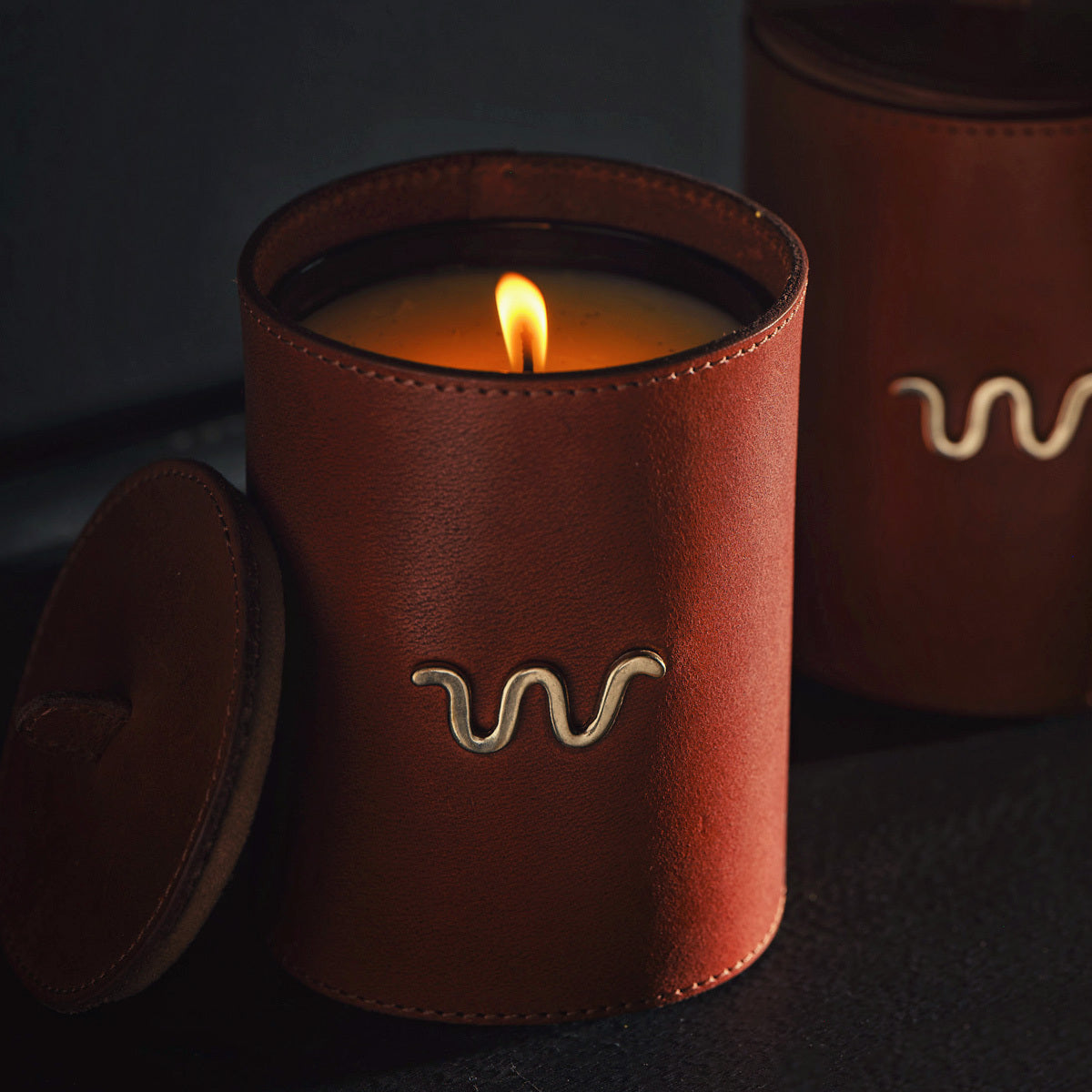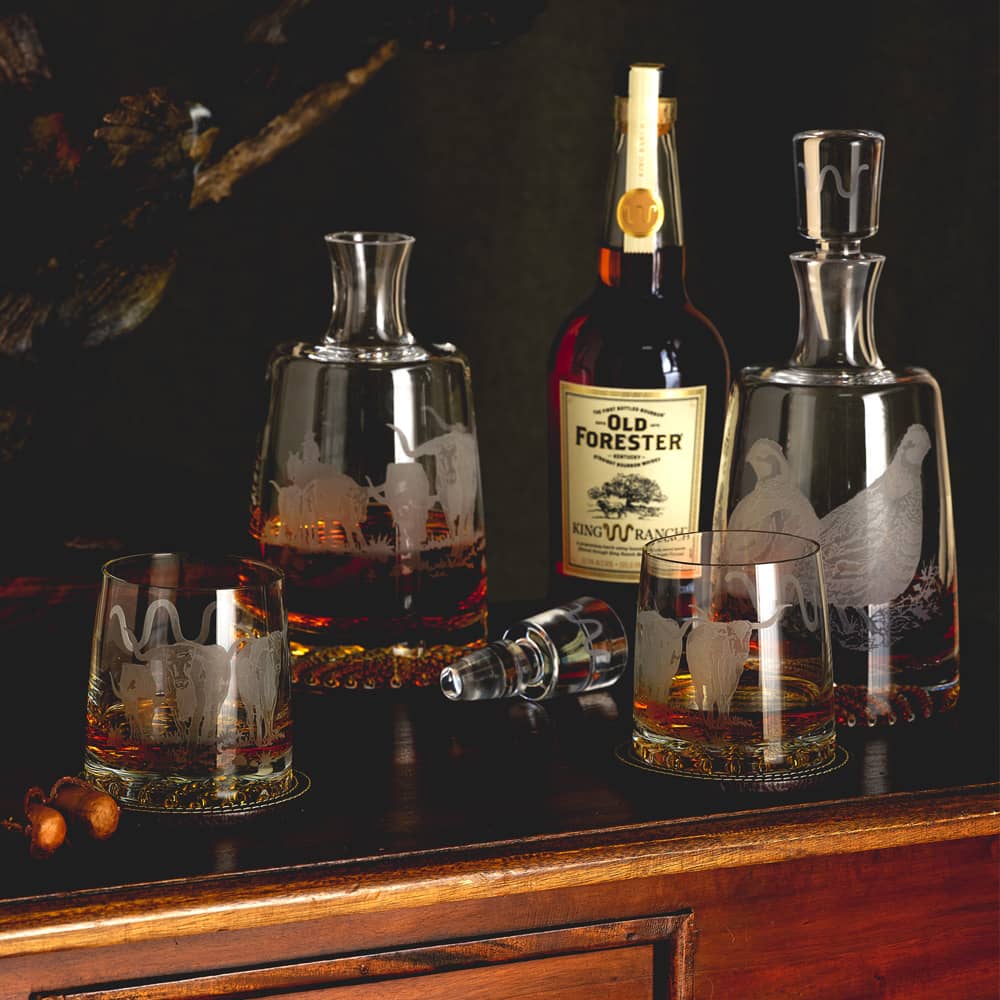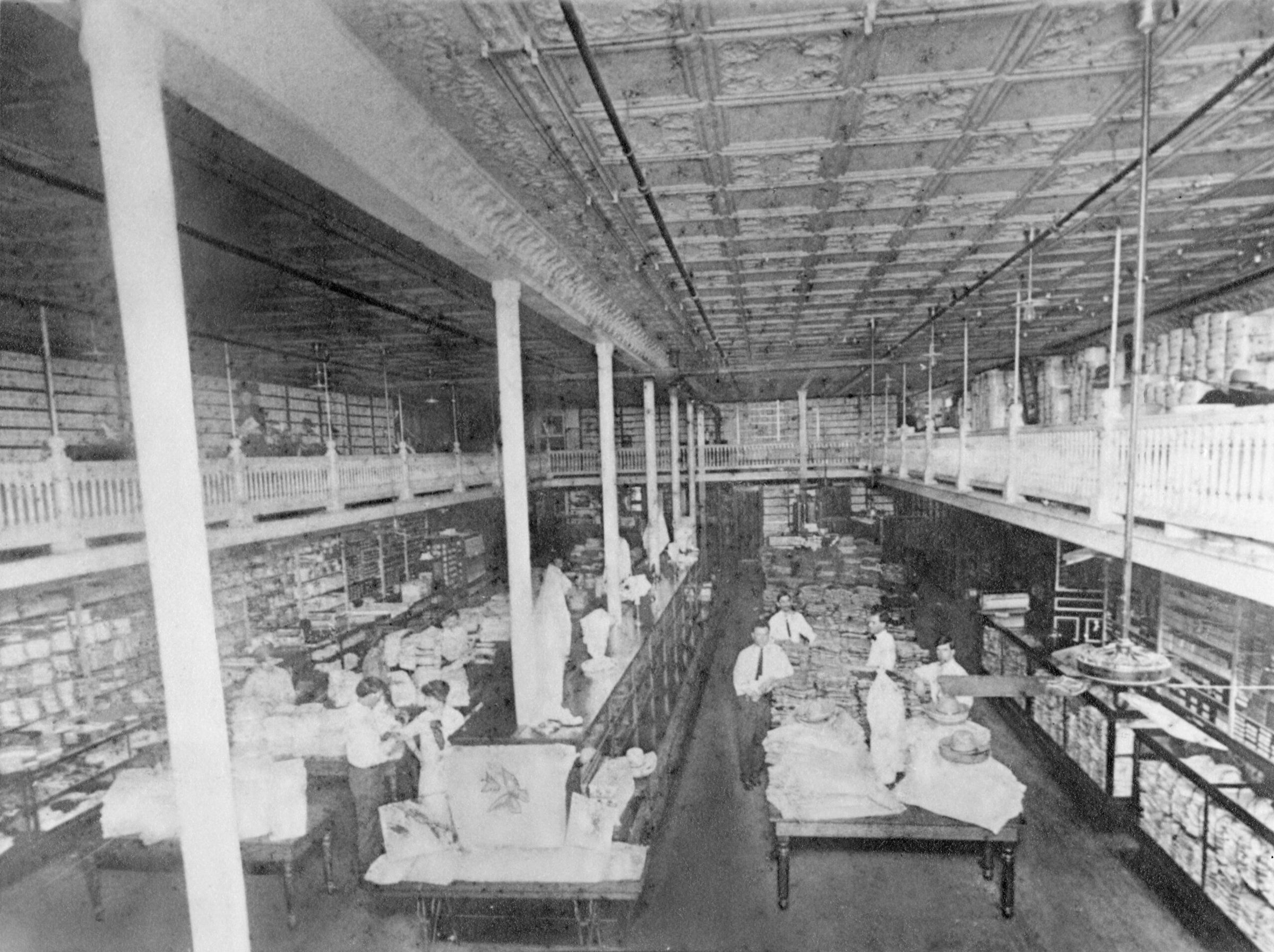By Lisa A. Neely
To tell the story of the John B. Ragland Mercantile Building, you first have to talk about the King Ranch Saddle Shop. The leather goods business of the Saddle Shop originated in the chaotic years following the Civil War. Captain Richard King recognized that ranching in South Texas demanded not only good men, horses, and cattle, but also outstanding gear. His account books for the late 1860s at the end of each year lists the number of saddles, harnesses, and other leather goods made on the Ranch, exclusively for the use of Los Kineños.

In 1867, Captain King began operating his own saddlery, crafting the best saddles, harnesses, and other equipment that time and experience had taught the artisans he hired. Throughout the rest of the nineteenth century, Captain King continued to hire only the most qualified artisans to make saddles and other gear for the use of the cowboys employed on his Ranch. By the 1900s, the operation was housed on the second floor of the historic Commissary on the Santa Gertrudis Division. The leather goods were all stamped “Santa Gertrudis Make.” As the fame of the King Ranch saddles spread, the Ranch was called upon to do significant work for outside parties.
“Growing up in Kingsville, I remember going to shop at Ragland’s with my mother for school clothes, since it was ‘the’ place to shop. ” – Lisa Neely

[Early leather craftsman at King Ranch]


[The Saddle Shop was located on the second floor of the Flato Building.]
The founding of Kingsville in 1904 led to increased commercial demand of the Ranch’s leather goods as well. Robert Justus Kleberg, Sr., Captain King’s son-in-law then managing the Ranch, realized this was an opportunity to serve the demands of both the cattlemen and public. Kleberg arranged for the Kingsville Lumber Company, which he also served as President, to take over the Ranch’s saddlery shop.
In 1918, the shop was moved into the upstairs of the Flato Building, the former site of the Opera House, in downtown Kingsville. Here in a space of 40 x 100 feet, the shop began manufacturing saddles and equipment for the other ranches in the surrounding area, as well as King Ranch. Harnesses, bridles and halters, horse collars, tapaderos, chaparajos, scabbards, and a full line of outdoor wear and equipment soon followed.

In 1980, the Saddle Shop moved across the railroad tracks to a 12,000 square foot building where approximately sixty different items were handmade to order and a number of manufactured goods were sold. At that time, there were twenty-five craftsmen working in production: nine men working with the leather and heavy machinery used to cut it and sixteen women working around the corner on the canvas goods. From 1940 to 1990, these leather goods were stamped with “King Ranch, Kingsville, Texas” around the edge of the stamp with both the Running W brand and the words “Running-W-Brand” stamped across the middle.
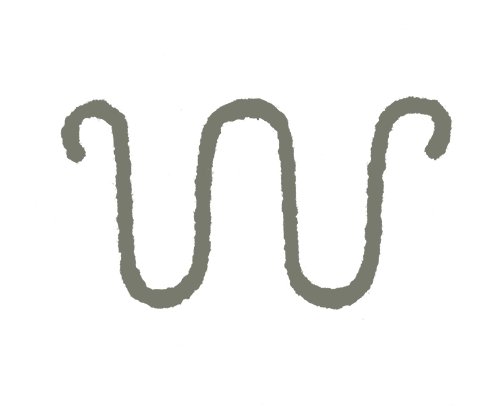

[Kingsville Lumber Company building]
In 1943, the John B. Ragland Mercantile Company was dissolved and the ownership of the store building and town lots was transferred to the Robert J. Kleberg & Company. When that Company was merged with the First National Bank of Kingsville to create Kleberg First National Bank seven years later, ownership of Ragland’s was transferred to King Ranch, Inc., which proceeded to incorporate the John B. Ragland Mercantile Company in 1950 as a new, wholly owned subsidiary named Ragland Mercantile Company. That same year also marked a complete remodeling of the building to launch the new business. Numerous architectural drawings were submitted. The design selected was by noted architect and designer, Raymond Loewy. The Ragland’s building received a new façade and new interiors. Loewy was a French-born American industrial designer who achieved fame for the magnitude of his design efforts across a variety of industries. Among his designs were the Shell and Exxon logos, as well as designing Coca-Cola vending machines and Lucky Strike packages. He was recognized for this by Time Magazine and featured on its cover in October 1949.

[Ragland’s under restoration]
Between 1989 and 1990, King Ranch, Inc., faithfully restored the Ragland’s building to its original 1909 appearance. The first step was to remove the 1950s façade. The Cordova-cream limestone detailing was reconstructed according to Jules Leffland’s original linen drawings. The entire cupola was rebuilt to once again crown the building. When completed, there was a grand rededication of the John B. Ragland’s Mercantile Company building.
The Store’s interior features the Saddle Shop’s renowned leather goods. In addition, taxidermy displays illustrate the abundant wildlife of the Ranch. Since 1990, all King Ranch leather goods have a new stamp. Because of the great care King Ranch took in the restoration of the John B. Ragland Mercantile Company Building to its original 1909 design, in 1991, the Ragland’s building received both the “Best Store Interior” and “Best Rehabilitation Project” awards from the Texas Downtown Association. In addition, the United States Department of the Interior listed the John B. Ragland Mercantile Company Building on the National Register of Historic Places in 1993.
Today, the King Ranch Saddle Shop operates in the John B. Ragland Mercantile Store in Kingsville, and has locations at City Centre in Houston, and a shop in College Station, Texas, with more planned on the way. Find more information about our vast history here.

Previous Article
Rediscovering the Cowboy Camp Houses of King Ranch
Next Article
Feeding Our Country’s Future – A Big Thanks to Agribusiness
